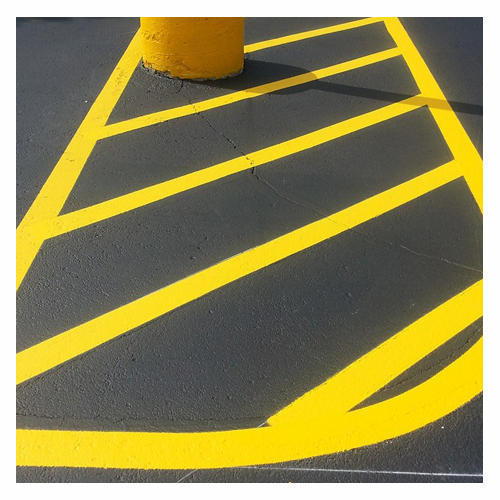MG Corporation
international
Road Marking
ROAD MARKINGS Materials:
Materials for permanent road markings shall be thermoplastic material as described inSection 6.5.2.1 or road marking paint as described in Section 6.5.2.2. Kerb marking shall be painted with road marking paint as described in Section 6.5.2.2. Road markings shall be white or yellow as shown on the drawings. Reflecting road studs are
Hot Applied Thermoplastic Materials:
The thermoplastic material shall be factory mixed, from an approved manufacturer and shall be of a tropical grade suitable for application, by the means proposed, to the specified road surfaces, and must demonstrate skid resistance appropriate to local traffic conditions. The material shall comply with BS3262 : 1987 ‘Specification for Hot-applied Thermoplastic Road Marking Materials’.
The material shall be supplied in containers which do not contaminate the contents andwhich protect the contents from contamination and shall be stored in accordance with the manufacturer’s instructions.
Ballotini (glass beads) may be incorporated in the mixture during the manufacture ofthe thermoplastic material. The quantity of balloting included shall be between 13% and22% by weight of the total mix and shall be counted as part of the aggregate. The Balloting shall comply with BS6088 : 1981 (1993) ‘Specification for Solid Glass Beads for use with Road Markings’.

Road Marking Paint:
All paints shall be road marking paint conforming to BS6044 : 1987 ‘Specification for Pavement Marking Paints’ and made by an approved manufacturer and suitable forapplication, by the means proposed, to the specified road surfaces. The paint shall be suitable for applying by brush or mechanical means. The following
particulars of the paint shall be supplied:
1)composition (analysis by weight)
2)application (brush or spray)
3)type and maximum amount of reducer (thinner)
4)drying time (wheel dry)
Construction Methods Thermoplastic Materials:
Preparation of Road Surface:The material shall be applied only on a surface which is clean and dry. It shall not be laid over loose detritus, mud or similar extraneous matter, or over an old paint marking , or over an old thermoplastic marking which is faulty. New surfaces must be allowed to weather and compact for at least 72 hours before applying the marking. In the case of smooth polished surfaces, e.g. smooth concrete, old asphalt surfacing with smooth polished surface stones, and/or where the method of application requires or the Engineer directs, a tack coat shall be applied to the surface prior to the application. The tack coat shall be as recommended by the manufacturer of the thermoplastic material and to the approval of the Engineer. Faulty thermoplastic markings shall be removed if required by the Engineer.
B)Preparation of Thermoplastic Material:
The material shall be melted in accordance with the manufacturer’s instructions in aheater fitted with a stirrer to give a smooth consistency to the thermoplastic and such that local overheating shall be avoided. The temperature of the mass shall be within the
Range specified by the manufacturer and shall on no account be allowed to exceed the maximum temperature stated by the manufacturer. The molten material shall be used as expeditiously as possible and for thermoplastics which have natural resin binders or areotherwise sensitive to prolonged heating, the material shall not be maintained

C)Laying of Thermoplastic Material:
Markings may be applied by hand-screening, hand propelled machine or by self-propelled machine as approved or directed by the Engineer. After transfer to the laying apparatus the material shall be maintained within the temperature range specified byte manufacturer and stirred to maintain the right consistency for laying.
In the case of screened application, material shall be laid to a thickness of not less than3 mm or more than 6 mm, unless specifically authorized by the Engineer. In the case of sprayed application, the material shall be laid to a thickness of not less than 1.5 mm unless specifically authorized by the Engineer. In all cases, the surface produced shall be uniform, appreciably free from bubbles and streaks.
A)Preparation of Road Surface:
The paint shall be applied only on a surface which is clean and dry. It shall not be laid over loose detritus, mud or similar extraneous matter or over a thermoplastic marking orover an old paint marking which is faulty or incompatible with the paint being applied. New surfaces must be allowed to weather and compact for at least 72 hours before applying the marking. If a primer or undercoat is necessary to ensure proper adhesion of the marking paint to the road surface without bleeding or discoloration, the primer or undercoat shall be fully compatible with the marking paint and the road surface, and shall be applied only if, and at the rate of application approved by the Engineer.
Submit Your Query
Get In Touch
- About Us
- Contact Us
- Carrer
- Gallery
- Products
CONTACT US
- House-423, Road-30, Mohakhali, DOHS, Dhaka, Bangladesh.
- +880258052523
- +8801711137359
- mgcirp89@gmail.com
- www.mgci-bd.com
Find us in Facebook
Copyright © 2023 MG Corporation International
